
Initialization
The website opening page presented the site theme – we are our choices.
Making choices is an intellectual activity of an individual brain, an effort philosophers call thinking (2) responding to a “call” (1) also originating in the subconscious mind. Our target is confined to the significant sociotechnical system problems we label Category three.
“Thinking” underwrites choice making by comparing the knowledge about candidate fixes to a prioritized value system also held within the individual’s brain (3). Choices made that turn out to be good attest that high-stakes thinking took place. 1 2 3
The theme is so central to our life’s trajectory it is expressly connected to this page:
- Scope of page subject matter
- The logical couplings between theme, the sociotechnical system, and this page
- Choices to be made
Scope:
The topic of trust sprawls across many different disciplines, including sociology, political science, economics, psychology, history, political theory and philosophy, management and organization studies, and anthropology. Social trust between individuals contributes to a very wide range of phenomena, including economic growth and efficiency in market economics, stable and efficient democratic government, the equitable provision of public goods, social integration, co-operation and harmony. Even though trust is an integral part of the theatrical performance of social life, no branch of science claims responsible dominion over its entire span of influence. No branch of science can advise on trust building by itself. It is always connected to an available supply of internal energy and competent performance.
Connections: The fantastically-complicated, nested, labyrinthine grey matter comprising the psycho-social phenomenon of trust, mediated by the subconscious mind is featured. Trust plays a dominant role in all social dynamics. It is the necessary component to the Plan B keystone role. Trust is a subconscious mind phenomenon and one of its many recognition programs, run from start to finish in a centisecond. The occasion of the global pandemic put a spotlight on trust like no other. Most organizations we trusted about covid proved untrustworthy and will remain so. Lost trust is sunk cost.
Spotlight on Trust
All social dynamics are trust-mediated

Everywhere there is social intercourse, there overseeing transactions, like the Cheshire cat, there be the specter of trust. Once qualified and mastered, trust building and maintenance skills pay off 24/7. Trust building has two prerequisites which must be in place to commence. The first is low angst. The second is you have to have your act together. The reason is that your subconscious mind has recognition algorithms for each one and they are permissive for trust building. Faith has no role in trust building. Trust is accumulated after the fact of your performance. No exceptions.
Not a word from their mouth can be trusted; their heart is filled with malice. Their throat is an open grave; with their tongues they tell lies. Psalm 5:9
We have tested many individuals from all walks of life regarding trust. In no instance did anyone deny that trust was the top factor in directing their social behavior. That is, if the social situation was peppered with distrust, the behavior chosen would be very different than if everyone involved was trustworthy.
Trust is the gravitational center of a cluster of other variables important in social dynamics, including life satisfaction and happiness, optimism, well-being, health, morality, psychological success, economic prosperity, educational attainment, welfare, participation, community, civil society, and democracy. Trustworthy people are healthier and happier and live longer than distrusting people do. Social trust is a core component of social capital and its indicator.
What could possibly be counted as social capital in people who can’t be trusted? About some acts, including task design, it is no defense to claim that one is following orders or even the law of the land. Every human being with reason knows that it is wrong, radically evil, to deliberately harm innocent stakeholders.
Using the fact that Plan B exists is a splendid instrument to cull the list of people you can trust. Those who reject the windfall benefit package of Plan B out of hand, are untrustworthy beyond dispute. Why would you cooperate and collaborate with people who prefer Plan A misery to Plan B flourishing?
High-stakes trust
When there’s a lot riding on the success of transposing to Plan B , only high-stakes trust will do. To attain and enjoy the Plan B way of life, deep trust is essential. The requisite level of commitment and responsibility that it takes requires whole-hearted cooperation and collaboration. With trust it’s hard work, without trust it’s impossible.
Several conditions separate distrust from high-stakes trust (HST):
- HST cannot be attained without intimate personalization. It cannot be done en mass. It cannot be fashioned between an individual and a collective.
- HST requires proactive husbandry. It has a shelf-life. There is no one and done. Without periodic demonstration, its entropy accumulates to failure.
- HST is always between two individuals.
The Plan B keystone has the only role that can engender high-stakes trust in the workforce. The foreman is in close proximity with his workers so that the cycle of personalization, trust-building by learning, and demonstration by performance occurs several times a workday. No remote or collective arrangement can possibly build high-stakes trust. It accounts for the highly successful master/apprentice configuration.
- You cannot operate in distrust-based conditions and be intelligent at the same time
- No one can afford the extra cost of distrust-based transactions indefinitely
- Groups in distrust cannot solve significant complex problems. Cooperation and collaboration impairments reduce potency and increase the viscosity of performance.
One way to controvert the claim that trust is the overarching factor in social system dynamics is by experience tests. Develop a checklist of factors you consider relevant in social behavior dynamics. Then interrogate each factor with: “If I change the trust environment of this factor from trust to distrust, or the reverse, does it impact your social behavior that’s to take place?” The only factor that influences all the others is “trust.” That is why trust is the umbrella of organizational behavior. Plan A is burdened with the distrust that attends all Organizational Dysfunction (OD). It would be easy to test an exception if one were to be identified.
Plan B is driven entirely on high stakes trust. Anything less is freefall back to Plan A. As Plan A/B mixtures are impossibly unstable, there is no such thing as analog trust. Its digital spectrum consists of trust, not trust (provisional), and distrust.
The umbrella factor trust, since it is the platform upon which everything social takes place, must therefore be the first task-action milestone for any goal-seeking activity. Don’t even think about leaving the mission launchpad before the trust factor measurement is settled business. If you can measure that it’s mission impossible before launch time, and you can, don’t launch.
Turnover equivalent to virus cases
One example of a foolproof trust component is turnover. Trust is entwined with turnover and it is a trustworthy number. Workers don’t quit the organization, they quit their supervisor. All high-turnover Plan A organizations are running on distrust-based transactions. In high-trust Plan B, turnover is at background level, about 8% per annum.

The 36% rule
One of the tools in the keystone’s toolbox related to trust is the 36% rule. It is an algebraic algorithm connecting trust to turnover which certifies that any turnover levels above 36% per year is prima facie evidential proof of distrust-based operations that are self-sealing. That is, once above the 36% turnover level, high turnover itself increases the turnover rate. The published average USA turnover rate? Thirty nine percent. Is the ubiquity of OD starting to make some sense?
In non-mathematical terms, the 36% rule defines the limit of an organization’s ability to replace the revenue-generating competency going out the door. It takes time to recruit and train and for the replacements to ascend the learning curve of local particulars. Some Plan A organizations have turnover above 70% per annum. They have no future.
Plan B turnover runs at the background-noise level and it reaches that level immediately. In Plan B, highly-qualified workers are applying for positions within the keystone envelope on their own initiative. The news of Plan B flourishing prosperity (high-stakes trust) travels at smart-phone speeds. Those who want to live the trust-based life, want into the act. Gotta wanna.
Turnover is extremely costly. It’s the most expensive factor in organizational operations, bar none. High turnover costs show up across a wide swath of management and administrative functions. In many high-turnover Plan A organizations, most of the activities of management and general staff are consumed in dealing with the consequences of high turnover, never its cause. The reality to face with a >36% turnover is that the organization cannot solve its pressing problems. Knowing instinctively where that incapacity leads, more problems, sends the best employees looking for a more secure and pleasant position.
No social system tracks their turnover costs. Since it’s management’s performance report card writ large, the ruling class declares the turnover subject undiscussable. In groupthink, ignoring turnover is counted as its solution.
The future could go this way, that way. The future’s futures have never looked so rocky. Don’t put money on it. Take my advice and stick to the present. It’s the real stuff, the only stuff, it’s all there is, the present, the panting present. Martin Amis
Scope defined
Since the subject of trust in common use is so diverse and ramified, and it has so many definitions and independent applications, it is necessary to define our limited scope upfront. No claim is made that our narrow field of high-stakes social trust concept implementations applies to any other area of the wide trust spectrum. We’re not sure what low-stakes trust even means. Would you trust someone who blindly trusts their government? Their newspaper? Their historian?
Going from drowning in the psychosis of organizational dysfunction to Plan B rational prosperity and human flourishing is about as high as social stakes can get. Trust is the primary deciding factor between success and failure in social performance. Distrust? Can’t win. High-stakes trust? Can’t lose. Our definition of trust that covers our narrow zone of expertise? Two men and a task.
We know nothing, for example, about trust and trusting regarding the House of Representatives or the UN. We learn from the sparse field research on trust in other arenas, but as we have no experience with trust-building in them, we have nothing certain to offer.
Until we can repeatedly demonstrate trust-building success by tangible performance of the trustee, we make no attempt to conjure generalized trust concepts. Rather than validating a theory by application of the theory, we validate measured success in high-stakes trust-building by evaluating backwards from tangible results of successful transpositions to hypothesizing what theory and methodology was most likely critical to take things there. What the reverse direction of logic does for us is reduce confirmation bias. No one will ever decode the trust recognition algorithm planted in your subconscious by invariant human nature.
We are painfully aware that trust is an opinion, an intangible phenomenon of the unknowable subconscious mind – an information processor of great power but, social network-wise, untrustworthy in the extreme. You can’t trust the source of your effortless, streaming trust decisions appearing on your teleprompter? How ironic can things get?
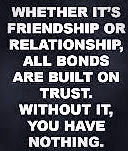
General Remarks
To our breed of MitM keystone, fussing about social trust is restricted to the interpersonal, horizontal trust between citizens, rather than vertical or political trust between citizens and political elites (citizen confidence in larger institutions). Trust is associated with individual characteristics, either as core personality traits, or individual social and demographic features like class, education, income, age, and gender. Social trust is a property not of individuals but of hierarchical social systems, level by level. Remember our definition of high-stakes trust: Two men and a task.
We all know trust may instantly switch to distrust as a result of betrayal. If you start building trust from “provisional neutrality,” it rises slowly only as demonstrated examples accumulate. If you start from distrust, gaining trust may be impossible regardless of time and effort. Social trust is part of a broader set of personality characteristics that includes optimism, a belief in cooperation, and confidence that individuals can resolve their differences and live a satisfactory social life together. The existence of Plan B testifies to the validity of that social ideal. Trust, an artifact of the unknowable subconscious mind, like social behavior, is indeterminate. It is created anew as time passes.
Political trust and social trust have both similar and different characteristics. Social or interpersonal trust can be based upon immediate, first-hand experience of others, whereas political trust is learned indirectly and at a distance, usually through the media. Social trust is essential for civilized social life even as political trust has become an oxymoron. Today, only a moron would trust the organizations of society.
Social trust significantly increases the chances of citizens paying their taxes. Social cooperation reduces the risks of free-riding citizens and exploitive elites. Throughout the realm of human social trust, it remains as the axle around which all social transactions evolve, revolve, and gain traction.
Even though everyone is peppered with trust assessment dilemmas (trust/provisional neutrality/distrust) on a continuous basis, trust rarely occupies the foreground of conscious awareness. In social life all you really have to know is what institutions make clear: loyalty is worth more than intelligence. That is, obedience to authority predominates. No need for trust when everyone has been compressed into a bait ball.
Trust is, however, a slave to the confirmation bias raging in your supercomputer subconscious, and it is heavily drugged on social stereotypes. Because you can never be certain of another’s motivations, intentions, or future actions, you must constantly choose anew to trust or be wary. Since you can never trust your own unknowable, untrustworthy subconscious, you can never let trust fend for itself. The more we engage the factors of invisible trust, the more we have reason to enlarge the span and significance of trust.
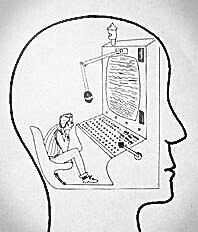
Survival advice
To save your skin, you must do triage up front on whatever your subconscious mind posts on your cranial teleprompter. Begin by understanding the keystone configuration scene to a comfortable level before moving on to trust in Act II.
High-stakes trust building is a particularly challenging competency. There can be no reference to faith or hope. Accordingly, we work only with generic practices and techniques that have unfailingly produced high-stakes trust. This is a methodology for trust-building which you can audition in real-world implementations for yourself. The path is marked by milestones, each milestone attained creates the possibility of reaching the next milestone.
There are several natural laws and engineering principles that apply in full measure to the human social system’s entangled network. No law of nature filters information. If it does get filtered, human’s did it.
Perfectly indifferent, it doesn’t matter to universal law whether you understand its social impacts or not. It acts. Experience with leveraging nature’s laws to purpose, especially Maxwell’s control theory and Shannon’s communication theory, shows that universal laws are instrumental in shaping trust-based human social behavior. There are a few surprises as well, such as the laws of network synchronization that sets a sky full of fireflies flashing together and to domino your internet service to unannounced, groundless meltdowns.
Plan B existence provides proof of management distrust. By summarily rejecting Plan B, POSIWID it affirms that organizational success and human flourishing that attends it is the last thing on their value system. People who believe that management acts in the best interest of the organization end up looking up to reality from under the bus.
There are a few natural laws that shape social behavior that are well worth knowing in depth. Since defiance of these laws is impossible, it’s best to learn how to put their indifference and reliability to work for you. If you don’t accommodate their influence, your ignorance will be punished. Some key principles in trust building are covered in the next section:
- POSIWID and trust
- Personalization
- Black Box
If someone is going down the wrong road, he doesn’t need motivation to speed him up. What he needs is education to turn himself around. Jim Rohn
POSIWID and trust
What is known about how the subconscious mind decides about assigning a grade of trust, provisional trust, distrust, or trust, is that the unknowable decision process is essentially continuous, taking about 15 milliseconds per decision. We hypothesize from thousands of observations that the principle being used by the subconscious mind to perform this feat is POSIWID. “the Purpose Of the System Is What It Does”
Directly tied to control theory first presented by Clerk Maxwell (1868) applied by William Ross Ashby (1948), popularized by Stafford Beer (1970), it was made an acronym by William Livingston (1988) and promoted in his books (Amazon) on Plan B. Trinkets labeled with POSIWID were distributed amongst the system-freak community and it went viral.
When POSIWID is used to make a conscious trust-choice, you take notice of what the person actually does and its consequences. You then conjure up what sort of purpose-of-action would bring harmony between his intention and his outcome. Lastly, you evaluate the congruent intention as conjured with your trust assessment criteria.
If the person has expressed his purpose up front, you compare his stated purpose with the consequences of his actions using the congruency test. If there is no alignment, and the person does not revise what he does accordingly, he is labeled distrust. If he does revise and try again, he is labeled provisionally neutral.
What we know for sure is that POSIWID, rooted in control theory, a natural law, can never be wrong about trust. Making clear your purpose and delivering on your promise is the de facto principle for moving Plan A people to Plan B. The interventionist does so from first contact, always beginning with “personalization,” forward. In the trust business, betrayal is final.
Anyone can use POSIWID, of course, to make decisions about people using their conscious mind. It’s always about people, not their system artifacts which are always true to POSIWID. Take your time to acclimate to POSIWID-think. In most cases you will keep your determinations private. We use it overtly to let MitMs know how they’re being trust-rated and how they are to trust-rate their interventionist. It takes high-stakes trust to make the pole-vault sprint to Plan B.
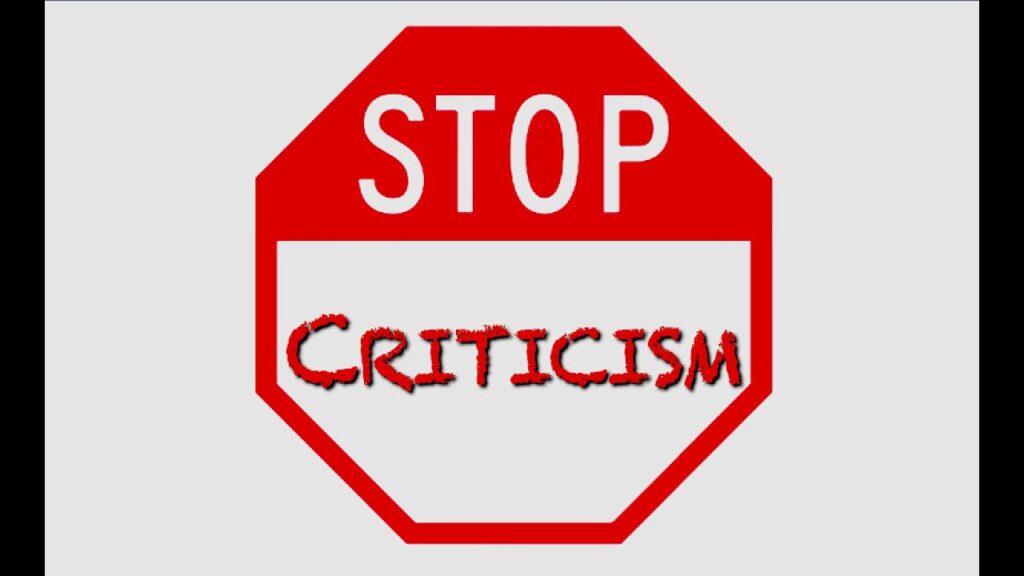
Avoid Musts
There are two functionalities that must be banished from your repertoire, permanently:
- Competition, especially zero sum
- Criticism
These “attitudes” are trust destroyers.
For competition, the ruling class favors the zero-sum game. It is the format of all management/labor negotiations because the head shed that controls the treasury cannot lose. Even when labor thinks it won concessions, it has lost the competition. In any zero-sum relationship where the size of the pie is not fixed, the wealthy side ends up winning no matter if the odds favor the poor side. This same mathematical certainty is used by the keystone fraternity in petition.
Most zero-sum transactions are bogus. Management uses zero-sum to stir up pointless competition so that trust can gain no foothold. You will be surprised just how extensive bogus zero sum is in social affairs. You will not be surprised about how difficult it is to bring reality to a particular instance. In place of competition, Plan B features collaboration towards commonly-held objectives for the collective. We kill zero sum inclinations in the crib.
There are no flavors of criticism which do not destroy trust. You just don’t criticize anyone you have to work with or live with. It just doesn’t get the intent of your criticism to happen, but the opposite. To replace criticism with positive alternatives will take learning and practice. The moral side of criticism doesn’t matter. It has to go. Replace it with assistance to improve learning.
You avoid the criticism curse altogether when you get voluntary responsibility-taking for autonomy. It’s the outcome that matters and it has quantitative measures. If it falls short, the responsible party will criticize itself, learn from feedback, and try another scheme. That’s how, exactly, all progress is made.
The keystone always trusts first.

Personalization: First and Foremost
In high-stakes trust-building, personalization is the lead-off batter. The interventionist goes to each MitM in the FLLP, in his work area, regardless of shift, before the syllabus discussions begin. Using his experience with the Rogerian Triad, he listens to the MitM tell his story until the MitM is finished, regardless of the time it takes. What that does is ensure the MitM begins his relationship to the interventionist on a trust basis, not neutral and not distrust. From that one-on-one visit on, trust is mutually maintained by performance. The interventionist delivers the stuff to implement and the MitM runs the tests in his world. Nobody is in a position to fool anybody. With the other MitMs in the class monitoring each other’s performance as well, it is impossible to falter and get away with it.
High-stakes trust-building fully recognizes individuality, makes deep personal connections, and keeps the focus on the individual trustee. Realize fully that your untrustworthy subconscious is making classifications of trust several times each second and it is outside of your conscious control. You can, however, use your conscious mind to gatekeep your subconscious imperatives with intelligence before you act.
Personalization includes silence breaking on some basic truths all MitMs need to get straight before learning can take place. During their social conditioning they were sold a bill of goods by people they trusted that set them up to fail in modern times. Plan A ruling classes reinforce that mal-alignment so that MitMs generally have no idea they are the keystones of organizational prosperity and human flourishing.
Management, untrustable even to each other, by role, coerces MitMs to replicate standard management practices proven to fail with underlings – knowing full well that if the MitM echoes those practices, he will fail too. POSIWID “Oh, they want me to trust a management that goes out of its way to assure that I fail my role.”
The interventionist, knowing he is working with damaged goods, MitMs psychologically sold on Plan A, relies upon hyper-learning methods to help the MitMs shed their flawed Plan A mindset and to realize they have the power to replace it with Plan B. This trick is where high-stakes trust is essential. People that don’t personalize properly, face to face, can never reach high-stakes trust status. We suspect it is a primary reason why no one before us ever figured out how to reach Plan B – or even if there was a plan B.

Black Box processing
The basic tool of investigating social trust
As mentioned, the concept of “trust,” an unknowable, exclusive function of the subconscious mind, far out of the reach of the conscious mind, is an endlessly-complicated, unknowable functionality. Because of the subconscious monopoly, our technique to acquire learning about the human trust mechanisms of action is done via trustworthy “black box” testing. Building practitioner knowledge about trust consists of systematically providing inputs to the unmeasurable, uncontrollable trust system, and measuring outputs. Over the decades we have done many thousands of black-box tests on social trust matters and journaled the results. Social behavior is a phenomenon obedient to the law of the excluded middle. If you can demonstrate you’re not in Plan A, you’re in Plan B.
To gain traction, we test every engineering principle, such as control and communication theory, to make tangible inroads, finding strands of logic we can use for sanity grab bars. In this great search for truth, artificial barriers around the established sciences and disciplines are ignored. Organic chemistry offered an example of a direct connection to trust far afield from sociological principles.
Most of the principles in the FLLP were either discovered through or validated by black-box testing. You will be executing procedures known to deliver. Those implementations are paradigm validation tests.
Keystone: Recent but easy
The keystone species ecosystem concept is relatively new to social science and the general population. The library on the keystone species regarding human social systems as ecosystems, is nonexistent. It is, fortunately, a concept easily grasped and straightforward to validate in the operational reality. It is congruent with personal experience and being publicized in a growing number of documentaries in the media. There are two keystone levels in the hierarchy – top gun for Plan A and the MitM level for Plan B. Everyone knows the emperor has no clothes but no one dares to admit knowing the front-line leader is the only possible keystone of social prosperity and human flourishing.
Plan A keystone functions are, by practical necessity, distrust-based transactions. That’s how, exactly, organizations go dysfunctional. The practical matter of the OD of Plan A is that it’s just too expensive to support and too unhealthy to tolerate, even morally.
Plan B keystone functions are, by necessity, trust-based transactions. The functions of revenue generation in Plan B are only two-thirds the cost of Plan A production of the same goods and services. The impact on employee health, psychological and physical, is a dramatic example of social success.
Knowing this, the ruling class still chooses Plan A. What does that tell you about the value system in use? It never was about money or organizational survival. We lost two years of progress banking on greed as the motivator of the Establishment. It was a monster error revealed by black-box testing. That lesson still smarts.

Trust: ancient concept
The notion of trust has been understood by everybody since Adam trusted Eve and lost their Eden real estate. It has been clinically established that newborns are already into trust determination of their caretakers by their second hour of life. What few folks realize is that everything they inherited in their hunter/gatherer genome plus all that got pounded into their heads by social conditioning about trust is, for today’s reality, desperately incongruent. One proof of that is a review of the relevant literature on trust. Civilization itself is a social artifact and no civilization can ignore its trust accounts and survive. Life is social intercourse. Trust is the topmost factor in your mental health and social capital.
Trust channels social process
The practical issues of trust are bedeviled by cause and effect. There can be no rational discussion about social behavior of any kind without joint understanding of the trust context within which the behavior is taking place. To proceed anyway just adds to the error. As you well know, how you behave in a high-trust social situation is dramatically different from how you behave with the same people operating in distrust mode. Trust-betrayal is an opera and movie plot standard. Because it is a confection of your unknowable mind, there’s no inertia in trust. It can be lost in a blink.
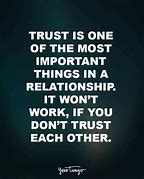
The connection of trust to mental health
Begin your understanding of social trust knowledge by grasping the structural framework that anchors trust to both Plan A and Plan B. For that trick it is necessary to bring out some truth about the network of subconscious minds comprising a social system, its mental health in particular.
By its behavior, and using the long-established criteria of the psychological sciences, you find that the symptoms of organizational dysfunction (OD) match the official, clinical symptoms of psychosis. In short, the Plan A institution acts as if it had a collective brain (it doesn’t) that was mentally deranged. The diagnosis of OD as the manifestation of organizational psychosis is the same whether the distrusted collective is in industry, commerce, or in government.
Psychosis is a general, umbrella term to describe a set of symptoms of mental illnesses that result in irrational thinking, bizarre perceptions, counterproductive behaviors, and ungrounded emotions. Psychosis is a subconscious brain-based condition that is made better or worse by environmental factors.
The official, empirically-established signs and symptoms of psychosis:
- Delusions – fixed, false beliefs, based on fear or suspicion of things that are not real
- Hallucinations – hearing, seeing, or feeling things that do not exist
- Disorganization – in thought, speech, or behavior
- Disordered performance, acting contrary to expressed intentions, irrational, akrasia
- Catatonia – unresponsive to disturbances, feedback
- Incapable of concentrating on important matters
- Unable to solve problems
The diagnosis of organizational psychosis does not depend upon the mental health of any or all of its members. The collective is reacting to its own unknowable network integrations. The individual inmates can be “normal” citizens just as easily as berserkers. The symptoms of the collective psychosis are independent variables. It is necessary to treat OD Plan A behavior as psychosis and nothing else. If you deal with the cast of the psychotic organization in any trusting way, you will get nowhere. It’s why all the effort you already put into being rational-helpful with your own organization, for its own good, got you nowhere. Why else are you reading this?
Consider the appeal for your unwarranted trust in the infallibility of potentates, knowing full well that infallibility itself is forbidden by the second law of thermodynamics. Observe the common use of society governance practices known to infuse distrust. Notice the irony (psychosis) in a society bombarded by the consequences of distrust applying the very practices, such as threats of punishment, known to amplify and cement distrust. Viewed from the psychotic state, “The floggings will continue until morale improves” makes perfect sense.
The conspiracies of silence and distortion of Plan A are able to deal with disturbances to the organization only for a short time. For the longer haul, the expedient poses serious problems. Participants sense they can’t trust each other because the discrepancies between what is experienced and what is publicly acknowledged is morally corrosive. POSIWID. Moral beings cannot keep on not discussing undiscussables. The avoidance of truth matures into a joint restriction.
Before 2013 and the advent of Plan B, all attention on the trust matter was from the psychotic Plan A perspective. Concepts about trust were hypothesized on the basis of the consequences of distrust-based social action, which seemed to be the only reference to classify OD available. That is, the validation of concept effectiveness depended upon the measured effect on mitigating distrust’s consequences. In no way is this focus on effects dealing with the cause of the psychosis.
Since all Plan A organizations are psychotic and all organizational psychosis develops via distrust, it can be concluded that trust is directly connected to mental health. Trust is indeed a very high-stakes affair, personal and social. What’s holding society back so effectively from Plan B benefits? We know only for sure that we don’t know. Our intuition can’t be trusted either. All we know with certainty is that Plan B, the fix, now exists.
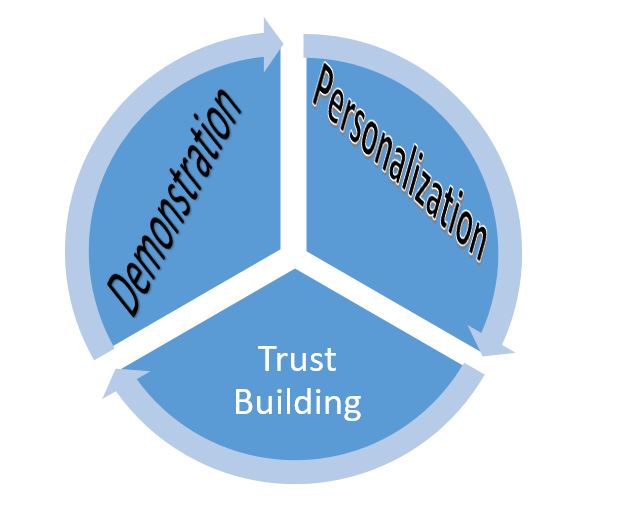
Unconscionable neglect of trust
Because of its paramount importance to the survival of our Homo species, one would expect that unlimited resources would be invested by the Establishment to get a full scientific, engineering, and pragmatic fix on trust. In ascertainable fact, the trivial amount of effort expended in trust research has resulted in more false narratives. You can and should controvert that claim on your own. It’s one thing for scholars to duck the trust issue with granulation and second-order topics. It’s quite another, as the carnage continues, that no one objects to the deliberate neglect.
In academia, Plan A from top to bottom, trust is a third-rail issue. Follow what happened to Stanley Milgram’s pioneering work on obedience to authority. Paul Zak’s research on trust and prosperity, while popular with the Ted crowd, is not bringing remedial action to the arena of social dysfunction. With 95% of the organizational roster distrustful of their bosses, it seems silly to ask the bosses for support. As it is now an ascertainable fact that it is impossible for the CEO level to build trust, it can never be trusted by the Plan B keystone-led workforce. Yes, the management hierarchy is psychotic, and untreatably so. That’s why, exactly, you distrust them.
In yet another irony, if the head shed did give the go-ahead to build trust, no one in academia would know where to begin. No one would dare connect it to the change-corporate-culture fad of the 1980s, a fizzled fiasco, an embarrassment to all parties. How can you make headway with trust when no one even knows what it is or what “done” in trust looks like?
You can safely conclude that the lack of the knowledge of actionable trust is a deliberate state of affairs groomed by the ruling class, a stratum of society within which those who trust outsiders are considered naïve patsies. That is why you will find no trustworthy definitions of trust from official sources, sacred or otherwise, all strangers. Just as no one ever changed corporate culture using deliberate ignorance, no one ever built trust from willful blindness.
Characteristics and traits of distrust
Any hierarchy abusing its MitM keystones, habitual in Plan A, can only be operating on and fostering distrust. It is the largest nursery for business failures on the planet. When trust is categorically impossible, what purpose is served by having trustworthiness still seem to matter to operations? Well, there isn’t any purpose.
Since no two psychological states originate ideas the same, you have no rational basis for trusting the fraternity of strangers who publish a definition of trust in the world’s dictionaries. Knowing the matter of trust is, in its entirety, a subconscious mind affair, how can your rational, plodding conscious mind possibly understand the criteria used by your unknowable subconscious mind to decide trust/no trust on an instantaneous basis? You experience that millisecond switching speed yourself whenever your trust is betrayed. We all do.
When the employee joins the organization, he enters with his social trust in limbo, fully equipped with the instincts of workmanship and the square deal, ready to cooperate and meaningfully contribute to the success of the enterprise as self-serving. When his provisional trust is betrayed by his leadership, he instantly adopts a new compelling purpose to replace his misplaced loyalty to organizational prosperity. What was provisional trust has become distrust. It’s a sea change.
So it is that trust is another word, like inalienable rights, safety, leadership, learning, and a square deal, words which society leaders deliberately leave undefined and unexamined so that the words can serve the whims of the ruling-class psychotics. The only common ground pertaining to trust, proclaimed by all throughout recorded history, puts it as the paramount factor in channeling human social affairs. It is.
Natures of trust
We consider the many-sided, slippery issue of trust is sometimes psychological and intangible, as a warning about its difficulty of resolution. “I’ll know it when I see it” is not a useful definition.
When you use trust as a noun, there is nothing material to refer to, nothing tangible to measure.
The MitM keystone is the essential enabler of social system trust. As he goes, so goes the organization. Even though he works under a management hierarchy he can never trust, the MitM’s task is to initialize and build trust in his workforce without help. He starts with a workforce who has long decided it can’t trust anybody, that no one is to be trusted. During indoctrination, the MitM keystone learns how trust-building is done by example, performed by the interventionist on him. Everyone blossoms when switching from distrust-based intercourse to trust-based intercourse. Night and day.
Mutual trust is the highest virtue of human civilization. War is its crime. Victor Hugo
As mentioned before, the way things go in a mutual trust environment has no correlation to the way things go when distrust permeates the context of work (standard business as usual, is a bastion of distrust). If you don’t specify in advance which of the two contexts is underwriting your discussion of operations, your offering cannot be trusted. To operate in distrust conditions and expect to obtain cooperation and collaboration is pathologically delusional, something psychotics do.
Chemistry as absolute measure of trust
As introduced earlier, the trust molecule is called oxytocin, a peptide hormone, that corresponds to the noun “trust,” one for one. If you claim to trust without a corresponding supply of oxytocin circulating in your blood, you’re not to be trusted. Oxytocin surge is a positive test for Plan B. The positive test for Plan A is high testosterone. Excess testosterone becomes a harmful anabolic steroid.
Hormones are controlled by the same subconscious mind that decides trust/no trust/distrust as-you-go, and runs your hormone factory as it sees fit, a cooperative action over which you have zero control. Anyone who trusts a person crazed on testosterone, oxytocin’s nemesis, is a fool.
The head shed of a Plan A organization is host to a high-potency version of testosterone called DHT. War dances are designed and equipped to prepare DHT-charged soldiers for battle. Even though it is the result of direct manipulation, psychosis seems to work for combatants, until it doesn’t.
As you can imagine, Plan B people are eager to get blood tested and settle the issue. Plan A people vehemently refuse blood testing. The very idea that a routine blood test can destroy the ruling-class façade all by itself brings panic to the head shed. The subconscious can certainly trigger some bizarre behaviors. We use the blood-testing proof for the fun of inducing catatonia. Anyone can perform the infusion. It illustrates the reflexive connection of trust to the subconscious mind.
Success: Platform of a trust hypothesis
Only MitMs can deliver positive results to organizational prosperity. The workers can’t do it because the MitMs have veto power over their efforts. Because of the inherent limitations of its role, under no circumstances can the head shed proactively make things for the organization better. The non-MitM individuals can’t cash-in high-stakes trust for benefit without a high-stakes trust relationship with MitM leadership.
Finding a way to Plan B was a long, painful, and erratic process of black-box trial and error. We kept detailed records of what we did. After each implementation of the concept, we captured what worked (small list) and what didn’t work (large list). The ledger is, in physical fact, a library of a thousand binders of folders. After trust-based Plan B ignited and ran by itself in 2013, we took the method and circumstances that finally worked and crawled back upstream like salmon to figure out what it was we did, when, that built such splendid high-stakes social trust and its signature Plan B payoff – positive reciprocity, a marker of human flourishing.
By working backwards from the successful outcome to reviewing the key practices that got us there, the path was identified and validated. Everything herein about our concepts of trust is referenced to this bedrock of successful experience. Notice that the concepts of trust presented here can be demonstrated in your own shop in a few hours.
The brute facets of social trust
- All values determining human social behavior are rooted in trust
- Trust has no mass, no inertia
- Untrustworthy people are ineffective problem-solvers, incompetent implementers – a menace to society
- Trust is exclusively a subconscious-mind artifact
- It makes decisions about trust in a few milliseconds after initial physical contact
- Trust-building best starts face to face one on one with trustor to trustee personalization (two men and a task)
- Trust is, like concrete, strong in some load-carrying ways but brittle in others
- The one proactively building trust must have his personal act together
- There is no room for error in building trust
- Betrayal of trust perceived is unrecoverable
- Trust building is a race against time and turnover. Lose it? Game over.
- There are unalterable preconditions for effective trust-building
- The trustor must have his act together before starting proceedings
- Trust-building never begins from level ground
- High-octane trust is a requisite for hyper-learning is a requisite for high-stakes trust building
- Never attempt trust-building in high-stakes conditions without practiced skills
- Never trust your subconscious on high-stakes trust-building situations
- Truth is more an effect of trust than a cause of trust
- Trust-building in a psychotic organization is only possible via the MitM keystone
- Never let social trust fend for itself. It needs vigilant attention.
Preconditions for high-stakes trust-building
The protagonist of trust-building must have his act together prior to launch. Any flaws in his initial condition will be instantly detected by the trustee’s subconscious. Game over in the first second.
The trust-building process does nothing to bolster the defective protagonist. It’s all one way, downhill from the trustor to the trustee. The protagonist may get affirmation that his approach is working, but he will get no help for increasing his competency. Requirements include:
- Empty angst tank
- Experience-driven confidence
- Proficient with the Rogerian Triad
- Genuine empathy with the trustee
- Authentic
- Positive regard
The MitM must sense that his best interests are contained within your best interests as trustor. When he gains confidence that that is the case, his angst blowdown tank discharges to the sewer. Whoosh!
How you meet those requirements is a separate matter entirely. They can’t be willed. The interventionist running the FLLP invested bootstrapping efforts that few are willing to make. Veterans of the FLLP are fully qualified to build high-stakes trust. Once you’re good at it, it’s your life.
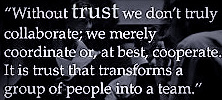
The network of entangled subconscious minds in psychosis
Psychosis cannot contribute to human flourishing and prosperity. It triggers defensive reactions in the sane and the insane can’t get anything done. When the defensive routines of distrust to avoid blame for the damage of Plan A are replaced with keystones voluntarily taking the outcome responsibilities of Plan B, it is impossible to confuse Plan A with B. A ten minute walkthrough of a facility where Plan B is thriving is sufficient. There is nothing to buy.
Much research has been done on the negative impact of organizational defensive routines. Many change programs have been and continue to be executed to reduce them, and the dominant focus has been to change the culture of the organization. Yet the effectiveness of cultural change programs as documented by evaluations of the participants varies from very effective to quite ineffective. And even when participants report that the programs produced positive changes, the changes have not persisted. Why?
Most individuals answer this question by saying that Organizations are too rigid and bureaucratic. They contain organizational defensive routines that inhibit learning and change. There is a lukewarm commitment to change from those at the top. I often hear additional explanations for why successful change is not sustainable.
Most busy executives do not have the time that is required to generate lasting commitment by others. It is frustrating getting people to realize that they are responsible for the problem and to stop blaming others or the system. Many executives express concern about harming their reputation if they take initiatives that are too risky. Chris Argyris (2004)
While the CEO can do nothing with his authority to make the organization prosperous, he can use fear of his power to punish to stabilize distrust as the permanent context of operations. In Plan A ecosystems, its keystone species, top predator with supreme authority, controls the ecosystem by fear and not the number of prey it takes. Fear of the predator alone leads to a large reduction in prey reproduction. In Plan A, the fear of punishment itself becomes the guarantor of crushing turnover and organizational decline.
It is plain by long experience that operating under head-shed distrust can be quite stable, GIGO and all – until the extra money it takes for living with its consequences runs out. Operating by distrust taxes the organization, on average, at 30% of its gross revenue. This amount of needless loss has recently been validated in part by measuring the positive economic impact of sharply-reduced government regulations.
As there are two keystones for structure in every hierarchy, the CEO for Plan A and the MitM for Plan B, there are two branches of trust as process. One branch is unconditional trust for Plan B, the other branch is company-wide distrust for Plan A. Organizational operations under psychosis, as the norm, bear no resemblance to trust-based operations.

What the keystone dependency means in practice is that the library on trust is totally useless for Plan A and impotent for Plan B duty if its keystone role is unfulfilled. If only distrust can exist in a social system, why worry about trust-building knowledge and practices? Besides, the high turnover in distrust-based organizations nullifies any gains made. For a century and a half, polls have consistently shown that the head shed is not trusted by 95% of the workforce. Only politicians fare worse. That is significant, trustworthy, actionable ground-truth.
Stop and think a bit, the primal cause of OD is sitting right there in plain sight. Follow the logic:
- It has been well established that every segment of society, every class culture, every groupthink, every nation, holds trust paramount in social intercourse. All social sciences, psychological sciences, and anthropological sciences place trust as the significant variable underwriting observable social behavior. Its importance as number one social process control factor is beyond dispute. Ask anyone anytime about the paramount importance of trust in their interpersonal relations.
- It is constantly and consistently reported that the population does not trust its organizational “rulers.” Ask anyone anytime about their trust in potentates, authorities, and commanders – all strangers. When we ask an audience of CEOs about trust and one of their kind claims the unwavering trust of his people, the other CEOs in the room reflexively laugh out loud. Since they don’t even trust each other, groupthink becomes their behavioral policeman in the place of trust. All groupthink does is prevent change for the better.
- Putting 1 and 2 together you are driven to the conclusion that hierarchical organizations, left to their natural proclivities, will invariably become distrust-based and psychotic because of it. The ubiquity of OD psychosis attests to its truth.
When both statements 1 and 2 are true at the same time, it trademarks akrasia, a Greek word meaning to act contrary to your knowledge. Going opposite to your own judgment, experience, and good sense is the running paradox of Plan A. To carry on in spite of the apparent psychosis, just feeds the dysfunction that holds you captive. The only way for the MitM keystone to fulfill his role is to establish and maintain trust-based Plan B operations. That’s the mission of the FLLP.
As an example of trust akrasia, just think of conventional “planning” by corporate general staff as ordered by the head shed. If it estimates, predicts, and forecasts on the basis of continued Plan A performance, the downward trajectory from using psychosis-based transactions is too pessimistic to report up the ladder. So you make positive stuff up and hope the fiction-medicated forecast will be forgotten before next year’s repeat. High turnover in the head shed actually makes that defensive lie a reasonable bet. Wasted effort; the lot.
If “planning” forecasts long range on the basis of trust-based transactions taking place, Plan B 16X performance improvement, no executive will believe its plan. Nobody in the head shed dares consider it possible. If planning promotes transposition to Plan B to make its organization-saving plan viable, planning will be relieved of duty. Whatever he does, the corporate planner cannot tell the truth. The difference between planning for A and forecasting for B makes the planning activity itself ridiculous. Distrust is the breeding ground of GIGO. You can’t defend yourself from blame for the consequences of distrust without the shield of make believe.
The psychosis reinforcement cycle is the heaviest of all social oppressions. No amount of money can make a working environment drowning in distrust anything but what it is. Runaway turnover, fleeing the insane asylum, is the report card clincher. This condition is why the MitM learns to shift away from defensive routines to the offensive, from a certain loser to a certain winner. The results are indistinguishable from magic.

The connection between trust and learning
Perhaps the largest long-range impact of trust in our lives is its death grip on adult human learning. While learning from a stranger is problematic at best, learning from someone you distrust, like credentialed elitists and authorities and potentates, is out of the question. Since the migration to Plan B is so learning-intensive and time constrained, there is no choice but to establish deep mutual trust early in the FLLP. Without timely, efficient learning, the prosperity magic is not going to happen. Getting to Plan B is a psychological pole vault over the excluded middle.
The difference between trust-accelerated learning and distrust-burdened learning is orders of magnitude in learning results. Timely trust-building is the common sense context of effective adult learning. Since the interventionist will not start the FLLP program episodes unless and until mutual trust is in hand, trust-building is the first activity. To trust is to act is the hallmark of Plan B success.
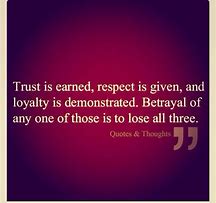
Reprise on the launchpad of effective trust-building
Because relationships can easily get off to a poor start, most relationships that eventually do end up in trust, began trust-building in suspicion. Because of always having to start from down in the bunny hole, most people think that building trust necessarily takes a bunch of time. The demonstrable truth is that in certain conditions mutual trust can be quickly established, bypassing the usual uphill struggle altogether.
Getting off on the wrong foot regarding trust-building is usually fatal and unrecoverable – and common. If the requisite setting is not present at first contact, and the necessary interaction context is not set by the trustor protagonist, the initial determination by the trustee is always suspect or distrust. That conclusion holds until proven otherwise over time. Such an uphill struggle can take years. The reason for this struggle is that the various affairs of trust are instantly handled by the subconscious mind, where nothing can be in limbo. It can take days before your conscious mind catches up to what your subconscious already decided.
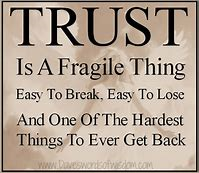
There are many factors that impinge on the initial determination.
-
-
- Your psychological state
- Your self worth
- The state of others in the immediate vicinity
- Your psychological state
-
- Hearsay gossip before the encounter
Attributes the trust builder must possess in order to build high-stakes trust
- A MitM veteran
- Self-confidence
- Zero angst
- Available internal energy
- Competence and experience in personalization and trust building
- Benevolent, authentic, expert at engaging the Rogerian Triad
- An implementer foremost, outcome-driven
- Trust measured by goal-seeking performance, not actions
- Deeds consistent with stated goals
If you are distraught with anxiety and insecurity, forget trust building. If you are incompetent or inexperienced in doing the necessaries, such as the Rogerian triad, forget trust building. If your trustee is fixated on his reputation, forget trust building.
The process of high-stakes trust-building is between two persons. In the case of the FLLP, it is between the interventionist-protagonist and MitM keystone antagonist. When high stakes trust has been forged, the keystone applies the same process he himself experienced to his workforce, one by one. There is a palpable joy when the MitM eventually brings the magical trust-building process back home. That’s when the interventionist gets a warm invitation for a home-cooked meal from the spouse. Trust-building works everywhere.
Revalidation of scope
Remember that the coverage of trust and trust-building in our field of high-stakes goal-seeking on this website is a small tightly-defined part of the trust spectrum. Our expertise in trust-building is limited to the horrendous plague of organizational dysfunction. In the pandemic arena, every principle about the trust-building factors we claim is demonstrable, observable, and measurable. There are hundreds of veterans to interview. Nothing has to be taken on faith.
As strongly as we claim proficiency in high-stakes trust building, we claim none whatsoever in any other region of the trust spectrum. As trust is a precondition for so many social transactions of lesser importance, we make no suggestion that our high-stakes process has automatic application in other arenas. Just because the Plan B stuff works for OD urgencies like COVID-19 does not automatically extend its potency to the quieter regions of the spectrum. Thankfully, building trust can’t be overdone.
We have found trust-building to be so valuable, personally, every day all day, it’s ingrained habit. The benefits of positive reciprocity pay off at the drugstore and at the library. The service providers appreciate personalization and its effect on attitude and performance.
Sizing up the trust-building challenge checklist
- Initial Trust Condition
- Trust
- In Limbo
- Distrust
- Stakes, skin in the game
- Low
- Material
- High
- History of particular Plan A
- Incipient
- Mature
- Ugly
- Personalization
- None
- Insincere
- Proactive depersonalization
- Turnover
- Trivial, natural
- Below 36% annual
- Above 36% annual
- Learning Gap
- Small, reclassification
- Important, custom
- Substantial, hyperlearning
- Time Frame
- Months
- Weeks
- Urgent, a permissive milestone
- Maintenance load, always proportional to turnover
- On call
- Event-driven
- Scheduled
- Stop Rules in Place
- Yes
- No

The connection of trust to transaction costs
For the FLLP, the trust-based process transposing the workforce from Plan A to Plan B, we define performance as the psychological paradigm for operations that eliminates the “administrative” transaction costs of Plan A, a distrusted business as usual.
When mutual trust is the context of work, things get better and better. When mutual distrust is the working environment, things get worse and worse. For one example, it is no secret in the construction industry, where total costs have doubled in ten years, that a project operating on the assumption of distrust, wallpapered with contracts, regulations, and specifications, adds 30% to the project cost. All big construction projects end up in tort litigation. All of them.
Distrust is the harbinger and facilitator of corruption. In psychotic organizations, corruption is the only activity that makes complete sense to the head shed. The distrust environment is an invitation to corruption.
We define distrust as the psychological state of the organizational roster where protective administrative costs, insurance for management, are prerequisite security for moving work forward. It is ridiculously easy to distinguish trust-based operations from distrust-based operations. Rampant distrust is the prime mover of all Plan A consequences. With psychotics running the asylum there are no close calls.
Trust and Tort Law
Tort law is all about betrayed trust. It features the planning process where fiction was intentional. It handles coverup actions by its “willful blindness” clause. When the plaintiff shows that the defendant engaged in deliberate ignorance regarding the consequences of distrust, the jury is instructed to decide on the basis that the defendant acted with full knowledge of his crime. Betrayals of obligation and resulting damages are everywhere.
Appraising trust-building effectiveness
We make no claims concerning our use of trust in any other context than the transposition from Plan A to Plan B. The reason is that trust-based operations are absolutely vital to the success of Plan B. If we don’t get requisite trust-building right, no Plan B. Every claim about trust-building in this website can be demonstrated in your organization, while you watch.
Trust-based social systems are foremost network systems of entangled elements and all the various laws of system apply. While trust itself can never be measured, having no mass, many of the pieces and parts of its consequences can be counted. In rational, trust-centered Plan B, no one wants to withhold effort from supporting their own ecosystem. In distrust-centered Plan A psychosis, wrecking your own environment is business as usual. The trustworthy state of Plan B is fortified with its past and pregnant with its future.
In that regard, knowledge about “trust” the verb, is best learned by demonstration and testing in real situations. We do not expect you to develop confidence in our work on trust solely from reading website pages. Books on trust and trust-building are relatively few and disappointing. There is no “trust science.” Considering the importance of trust to social living, you would think that science would have developed its own trustworthy knowledge base long ago.
Connecting trust to your genome
Trust and distrust are psychological phenomena. Opinions have no inertia. The subconscious part of the unknowable human mind, genetically programmed for hunter/gatherer living and invariant, directs everything about building and maintaining the trust accounts. In Stone Age days, wariness about strangers, distrust, kept you alive. The only way to have a conscious-mind decision in trust determination is to implement the paradigm that shoves the subconscious mind in a trust-forming direction. Your conscious mind cannot will trust choices. You can’t do a thing about the subconscious’ monopoly on trust and its direct connection to hormone production
Reprising the critical role of personalization in trust building
Personalization is the first milestone in every high-stakes trust-building operation. The process is done one-on-one, cheek by jowl with the interventionist/protagonist, who is qualified, skilled and experienced with the Rogerian Triad, taking the lead. Knowing that the trustee is the MitM keystone, the bonds of mutual trust develop at warp-drive speed. Remember, trust is a psychological entity wholly owned by the unknowable subconscious mind, something you feel. Having no inertia, the subconscious streams conclusions about trust in less than ten milliseconds. You experienced that switching speed when your trust was betrayed. The repetition of this matter on this page is intentional.
What personalization upfront does is prevent getting off to a bad start, that is, in distrust. Without personalization the effectiveness of learning tanks. In high-stakes trust-building, you can’t trust someone who doesn’t know you. You can’t trust an organization that treats you as a poker chip. Thereby, personalization invokes the platinum rule: “Do unto your trustee what he wants you to do for him.” This is constructive leadership at its best.
The golden rule
The golden rule is evil: “Do unto others as you would have them to do unto you” takes the obligatory personalization of others completely out of the picture. It’s destructive leadership writ large. One doesn’t need to know anything about the stakeholder to act. Who he is doesn’t matter. Only your needs matter. That’s why the golden rule is in the Bible and the platinum rule is not. The golden rule sanctifies “slay and smite.” Living by the platinum rule prevents hostility from forming in the first place.
Many people are gifted with natural trust-building talent for low-stakes situations. They establish mutual trust just fine without conscious thought or effort. No one is a natural at high-stakes trust-building. High-stakes personalization is a practiced skill. You have to have your personal act together. You have to learn and practice the dances that get the job done within the allotted time.
Defensiveness: OD giveaway
Defense of the undefendable on Establishment behavior includes not only those behaviors customarily regarded as neurotic: rationalization, compensation, fantasy, projection, compulsions, phobias, and the like, but also some of the behaviors customarily regarded as psychotic, notably paranoid behaviors and catatonic states.
For the various mechanisms of defense; intensionality is a term which covers the characteristics of the behavior of the individual who is in a defensive state. The creative bent gets deeply buried under layer after layer of encrusted psychological defenses, hidden behind elaborate facades which deny its existence.
Defensive behavior reduces the consciousness of the threat but not the threat itself. And so, as the threats mount, the work of protecting the self-concept becomes more difficult and the individual becomes more defensive and rigid in their self structure. If the incongruence is immoderate this process may lead the individual to a state that would typically be described as neurotic. Their functioning becomes precarious and psychologically vulnerable. If the situation worsens it is possible that the defenses cease to function altogether and the individual becomes aware of the incongruence of their situation. Their personality becomes disorganized and bizarre; irrational behavior, associated with earlier denied aspects of self, may erupt uncontrollably.
The essential nature of the threat is that if the experience were accurately symbolized in awareness, the self-concept would no longer be a consistent gestalt, the conditions of worth would be violated, and the need for self-regard would be frustrated. A state of anxiety would exist. The process of defense is the reaction which prevents these events from occurring.
Defensiveness is defined as the process by which accurate symbolizations of threatening experiences are prevented from reaching awareness. Defense is the behavioral response of the organism to threat, the goal of which is the maintenance of the current structure of the self. This goal is achieved by the perceptual distortion of the experience in awareness, in such a way as to reduce the incongruity between the experience and the structure of the self, or by the awareness of an experience, thus denying any threat to the self.
The basic estrangement in man develops when he has not been true to himself, to his own natural organismic valuing of experience. Preserving the positive regard of others, he has come to falsify part of the values he experiences and to perceive them only in terms based upon “self value” to others. Yet this has not been a conscious choice, but a natural and tragic development in social conditioning and institutional force. Defense of the indefensible includes not only the behaviors customarily regarded as neurotic: rationalization, compensation, fantasy, projection, compulsions, phobias, and the like but also some of the behaviors customarily regarded as psychotic, notably paranoid behaviors and catatonic states. Once the acute psychotic behaviors have been exhibited, a process of defense again sets in to protect the organism against the exceedingly painful awareness of incongruence to authenticity.
Any experience which is inconsistent with the organization of the structure of the self may be perceived as a threat, and the more of these perceptions there are, the more rigidly the self structure is organized to defend itself. A growing openness to experience – they move away from defensiveness and have no need for subception (a perceptual defense that involves unconsciously applying strategies to prevent a troubling stimulus from entering consciousness).
Connecting trust to control theory: a moving target
Viable dynamic systems, visible or not, are always goal-seeking. At any instant, the system seeks the goal and adjusts itself via feedback of results to attain it. Whenever it is stymied from attaining its intended goal, for example, the system immediately strives towards another goal. It is never goal-less, even when it is “off.” When the game plan is to attain your goals, is all about regulating the course of events.
When high-stakes trust levels have been reached, you must switch from monitoring from what the antagonist is doing to what he is delivering, trusting that his compelling purpose is reasonably congruent with yours. Responsibility/autonomy is the life-blood of high-stakes trust.
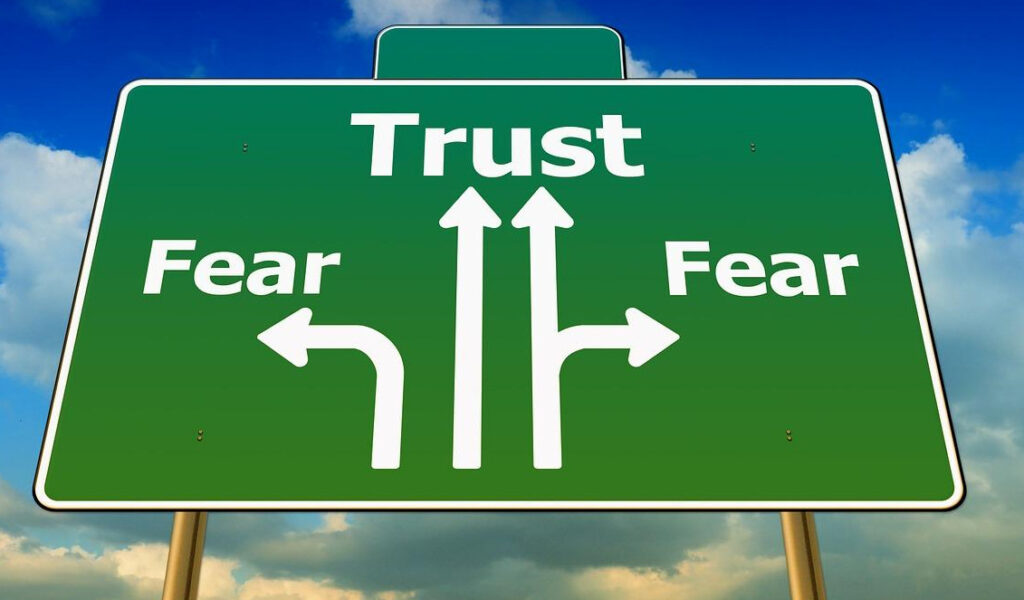
Management school trust-buster
One example of the counterproductive rampage of distrust is the top-down threat of accountability. This tool is a staple of management school, where every graduate student is told that a proper leader holds his people accountable for results. On the whole it is a form of psychological coercion which produces fear in otherwise cooperative citizens. Ironically, in spite of the fact management by “drive” (a euphemism for force) was a colossal failure from the first, it is still number one in the managers’ toolkit of power and control. It gets the job of control by fear done at the high cost of distrust – an unavoidable tax it has to pay.
Only the Plan B keystone can exercise positive power, the engine of prosperity, by virtue of his leadership role of the high-stakes revenue crew. The keystone evaluates his own work. The keystone man is on performance feedback mode all day long – by role. No other level in the hierarchy is capable of serving as a standard of care for the keystone. Any attempt by anybody to hold the keystone man “accountable” for results is a menace to the organization.
In high-stakes situations, when trust-building is successful, there is a sea change in the observable characteristics of social behavior. The keystone can’t expect to maintain trust if his actions don’t reflect goal attainment.
In distrust or don’t-trust modes, you are evaluating the actions of your subject to see if he is doing things consistent with trustworthiness towards your goals. Remember: “two men and a task.” POSIWID.
More advice for the MitM
When your trustee became trustworthy on your trusty scale, you must with fanfare (we exchange a talisman), switch from monitoring activity to occasionally measuring accomplishment. When the subject weighs in by voluntarily taking responsibility for delivering the results you jointly want in exchange for autonomy in choosing how he will do it, he will not only set his task actions himself, but will be energetically detecting his errors and making corrections. He will be using his own criteria of success as reference.
A “fix” imposter
A sure indicator of incompetent, untrustworthy leadership is the decision to change the roster as the fix to organizational dysfunction (OD). While there are instances where sociopathic managers have had to be extracted before any advance towards Plan B could take place, the damage from changing rosters has a terrible history regarding OD. “Heads will roll” spreads like jungle drums.
Can you trust the quest?
While there is always a trust relationship between two people, computed on an instantaneous basis by the subconscious minds, there is also a trust relationship regarding a task-action assignment. This sort of trust involves the actionable quality of information available and provided regarding the assignment, called actionable-quality information (AQI).
Only the 10% conscious mind can be trusted to make the determination about information quality. 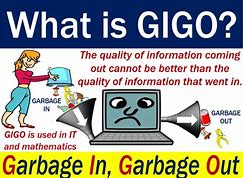
The quality of information going into a process can only be degraded by the process. While the powerful 90% subconscious mind does incredible feats, to be sure, the information it creates and deals with is fiction. The problem in taking task action is that if the goal is real life, only AQI will get you there. GIGO will not.
In Plan A groupthink, separating the relevant from the irrelevant is done, not through objective examinations and classification, but via a sociomental act performed by members socialized to focus only on certain aspects of the situations while systematically ignoring others. These comprise mental cages designed to separate what conventionally can be noticed from what conventionally must be ignored. With this arrangement GIGO sabotage becomes certain.
So, long before you begin storming the castle, a high-stakes proposition, it’s best to check on the quality of the information you have about its fortifications. Are your assumptions about the challenge ahead trustworthy? For this precaution, only the trustworthiness of the information itself, not the trustworthiness of the people selling it, matters. In high-stakes situations, even your mother is no guarantee as a source of AQI. Don’t take it like personal, Mom.
Whenever a there is a dynamic system, trustworthiness of information about its dynamics is measured by the application of internal-consistency tests. No functioning system is immune to the effects of universal laws of conservation. The following checklist has been developed from time and experience. It prevents making a big error on assumptions. If the information is trustworthy, all the laws of conservation will be included and reconciled together.
If the information is untrustworthy, discrepancies will appear between inputs and outputs. It is the nature of Plan A social behavior that when one natural law is being violated, other natural laws have to be violated to cover up for the first attempt at defiance. Natural law is not a position, ethical or otherwise, to be adopted. It is not a philosophical claim to be justified. Natural law is an account of what you already know about your experience.
The truth of natural law is endlessly demonstrated in the perfect reality of the present.
The most-frequently tool used for AQI determination is POSIWID, To use this tool, first you listen to the stated purpose, you then observe what is done towards that purpose, and lastly you do a reconciliation. The power of POSIWID is that when you call the perpetrators on the inconsistency you noted, they invariably become catatonic, nailing their own coffins shut. They’ve been caught with their hands in the cookie jar.
To succeed the mission, the trustworthy Plan B gang organizes its attention around the objective. Design and assign cannot afford to arbitrarily limit the areas of knowledge it includes. Such limitations systematically disregard significant variables. The collective normative and conventional constraints imposed on cognition are for a purpose having nothing to do with the labor of goal-seeking thought.
Is this gonna work?
- Official keyword definitions are in general agreement and align well with reality
- The efforts made to fix the system issues raised were integrated, commensurate, timely and apolitical
- Lessons learned from concept trials were fed back into the implementation system
- The system of interest was defined and treated as a system issue
- The prerequisite riddles/quests, if any, between the effect and the cause of the fix were identified
- The set of behaviors and consequences associated with the system was codified
- Appropriate and thorough R&D has been done consistent with significance
- Concepts proposed are falsifiable
- Hypotheses and concepts were systematically tested
- Entropy extraction routinely took place
- Implementations exist for examination and evaluation
- Realized benefits are auditable
- There are veterans to interview
- Advances in developed knowledge continues
- Authentic responsibility for success has been established
- Is the issue also an issue in Plan B?
Lessons Learned
- No productive discussion of social behavior is possible, even for general concepts, without characterizing the trust environment within which the behavior will take place. A discussion of social behavior without specifying the trust component of context is a waste of time.
- You don’t resolve the differences in personality and attitude as a precondition for building trust. What you do is collaborate on addressing the issue, using performance as the measure of progress, finding out forthwith that the various incompatible differences in individual personalities that concerned you in distrust mode didn’t matter a whit in Plan B mode.
- Untrustworthy people cannot solve high-stakes problems
- Nature is above all self-consistent
- If your operating context is distrust, the topic of trust itself no longer matters.
- If your operating context includes zero-sum transactions, the topic of trust itself is irrelevant
- All issues and questions with trust are resolved where concept and reality engage. If no implementation, the concept remains delusion.
- Social systems may be invisible, intangible networks of entangled subconscious minds, but they are also viable ecosystems, which can deliver material consequences through its human agents.
Trust/distrust zingers
- Distrust is the automatic veto of change. The Nash equilibrium.
- Trust is the core of influence
- You cannot operate in a distrust context and be intelligent at the same time
- No one worried about reputation can be trusted
- Distrust contributes to high system entropy accumulation
- Trust building is automatic proactive on entropy extraction
- The trust situation is first thing to evaluate
- Zero sum is a seed bed for distrust
- Turnover sets the minimum speed to build trust
- The smallness of the high authorities
- In Plan A, you don’t raise your self-esteem by doing good work. If you’re really good, the management-distrusting majority will come around and instruct you to cut back.
- Are authors on trust offering implementation evidence?
- Making progress on high-stakes social system problems is a brutal process only high-stakes trust can deliver
- Trust-building in Plan A is the pursuit of the impossible.
Trust tips
Don’t bother trying to convince any protagonist that Plan B doesn’t exist. Don’t think that your refusal to audit Plan B implementations is sufficient proof to controvert the Plan B claims.
Don’t bother trying to persuade anyone that trust is unrelated to prosperity. The hard evidence of the marriage is overwhelming and evidence otherwise does not exist. Prosperity is not the responsibility of the head-shed personnel. Management doesn’t create jobs, Plan B keystones do.
History shows that turnover alone kills any progress in the womb. Protagonists of Utopian concepts used long learning times as a plausible excuse for failure of their schemes. Psychological systems such as OD have no inertia to overcome. You can witness the sprint at an implementation. It is indistinguishable from magic.
Don’t bother trying to prove that trust is not central to adult hyperlearning. When a teacher uses credentials in place of trust, e.g., the window of opportunity for hyperlearning for Plan B is closed.
Everything we know and do about trust is derived from successful Plan B implementation experience, which proved to be impossible without high-stakes trust. It convinced us that the operational reality is only soil where trust can grow. Now you have the Plan Bs sprouted by the pandemic.
Views: 341

